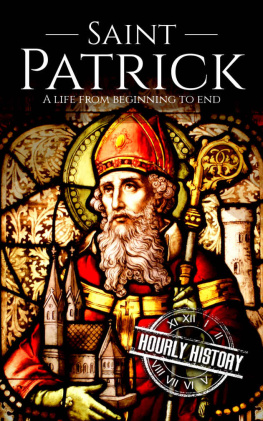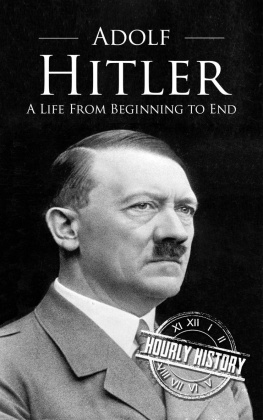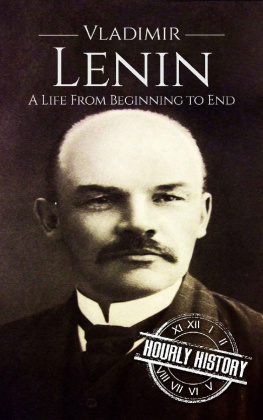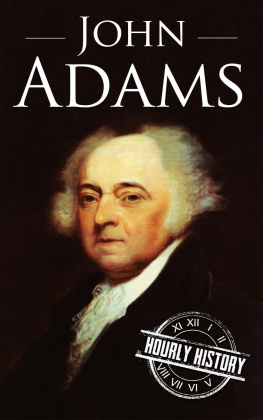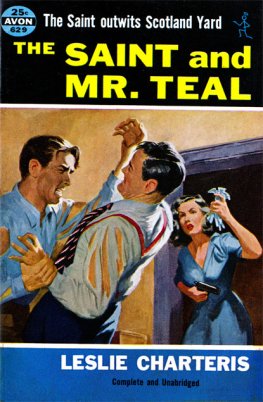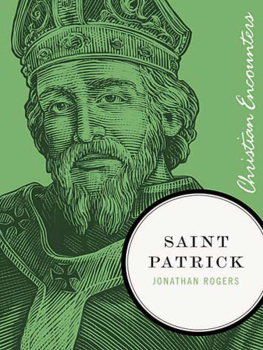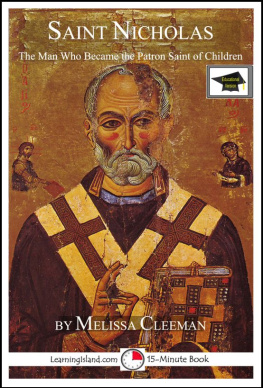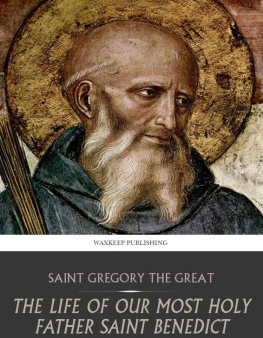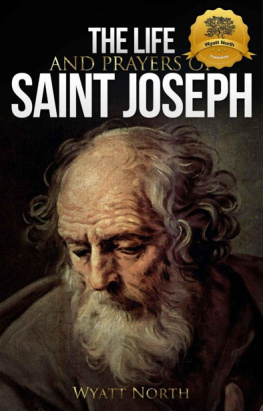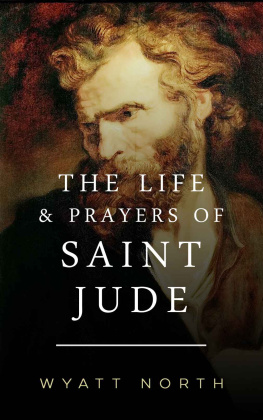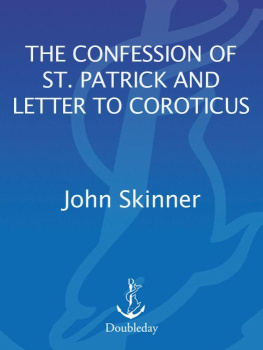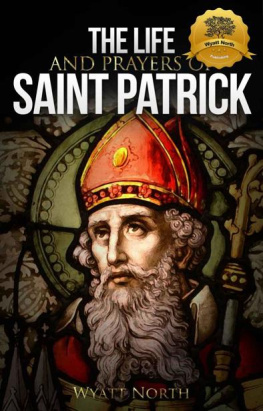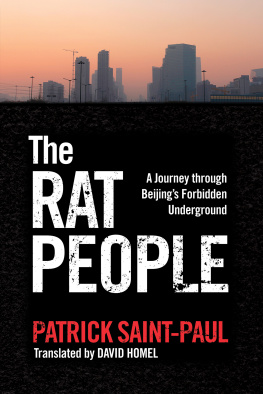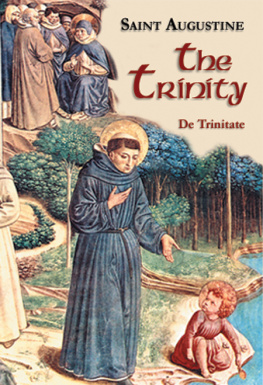SAINT PATRICK
A Life From Beginning to End
Copyright 2018 by Hourly History.
All rights reserved.
The cover photo is a derivative of "Saint Patrick (window)" (https://www.flickr.com/photos/sicarr/3252088322/in/set-72157613324540934/) by Sicarr, used under CC BY 2.0 (https://creativecommons.org/licenses/by/2.0/deed.en)
Table of Contents
Introduction
Known as the patron saint of Ireland, Saint Patrick was a missionary who is best known for converting Ireland to Christianity in the fifth century CE. He is the stuff of legend and of truth, beloved by many, and thus it can be difficult to discern which stories are factual and which are not. Many of them are borne of the joy and new way of life brought to the nation by Patrick.
One may be surprised to learn that Saint Patrick was not actually an Irishman. His name was not Patrick eitherthis was a name chosen by him after joining the clergy and becoming a priest. Saint Patrick is celebrated by Catholics and idolized by millions due to his resilience, kindness, and numerous good works that he perpetuated. He was an unlikely candidate for such a task, having little to no religious education while growing up. His visions would have him seek a path even he felt was unlikely. It was certainly no easy task to bring Christianity to an entire nation, but by gathering a band of loyal followers, walking miles and miles, preaching, and teaching the ways of Christ, millions of Irish citizens found themselves practicing Christianity.
Scholars are unsure of when Patrick took his last breath. He is presumed to have died on March 17, 493 CE, in Saul, County Down. It is for this reason modern society celebrates Saint Patricks Day every year on March 17. Many traditions of Saint Patricks Day derive from the practices of the saint. For example, the tradition of Pota Phadraig (or Patricks Pot) is the name given to the amount of whiskey to be drank on Saint Patricks Day. It is customary to float a shamrock upon the whiskey before drinking it. Whether Christian or not, the story of Saint Patrick is an intriguing and remarkable one.
Chapter One
From Slave to Bishop
And He watched over me before I knew Him and before I learned sense or even distinguished between good and evil.
Saint Patrick
Saint Patricks birthplace is not exactly known. Religious scholars believe he was born around the year 375 CE in Scotland, but other accounts indicate that the location could have been Cumberland, England, or even in Northern Wales.
Patrick referred to himself as being Roman and Briton. He was born to Calpurnius and Conchessa, Roman parents living in Britain. Calpurnius was a deacon and came from a family of high social status. Conchessa meanwhile was a relative of the patron saint of Tours, Saint Martin. Beyond that, Patricks grandfather, Pontius, was a clergyman. Patrick was born under the name Maewyn Succat and only changed his name after becoming a priest. Oddly enough, his family did not place emphasis on religion or educationneither was particularly impressed upon him while growing up. Patrick described his embarrassment about it in his Confessio, stating that he feared to reveal his lack of education.
When Patrick was 16 years old, he was taken captive by Irish pirates. He and several of his fathers slaves and vassals were brought to Ireland, where they were sold into slavery. He ended up in the city of Dalriada; his job there was to tend sheep. During his time as a shepherd, Patrick often suffered from cold and hunger.
Patrick answered to a pagan master whose name was Milchu. Milchu was a high priest in the religion of druidism, which reigned supreme in Ireland during this period. Even though Patrick had been a non-believer up to this point in his life, he saw his enslavement as a test of faith from God. He thus devoted himself to Christianity and prayed constantly. His prayers would not go unanswered.
One night Patrick received what he perceived as an important message. In a dream, he saw all the children of Ireland still inside their mothers wombs reaching their small hands out to him. He interpreted the vision to be a call to do mission work in pagan Ireland. His faith renewed, Patrick was grateful for the Lord having taken mercy on his youthful and ignorant soul and was elated with the opportunity to have his sins forgiven and become a devoted Christian. This opportunity, coupled with the message that he had received, propelled him onward.
Patrick eventually escaped after six harrowing years in captivity. The escape happened around 408 CE, inspired by another dream in which a voice told him he was going to find his way home to Britain and that Your ship awaits you. Patrick felt he had to make the dream come true, and so he fled from his master and headed south, traveling over 200 miles. When he reached the town of Wexford, he approached some sailors and convinced them to allow him to board their ship. The journey from Ireland began.
The crew sailed for three days before they reached the coast where they abandoned their vessel. They wandered in the wilderness for 28 days and covered hundreds of miles of terrain in the process of doing so. The starving crew had no supplies left and became faint from lack of food. Advising his shipmates to put their faith in God, Patrick prayed for sustenance and, before long, encountered a herd of wild boar. This event greatly contributed to his reputation and esteem within the group.
Patrick eventually found his way home in his early twenties, around the age of 22. He was reunited with his family and would continue his study of Christianity. He is presumed to have studied mainly in France, spending years in a town called Auxerre. Although his studies were carried out here, he is also thought to have visited Tours and the Abbey of Marmoutier. He is also presumed to have received his tonsure (shaving of the hair from the scalp as an act of humility) at Lrins Abbey, which is located on an island off the French coast.
Patrick performed most of his studies under the guidance of a missionary named Saint Germanus, who was a bishop of the Western Church. Saint Germanus was a fine teacher for Patrick; he had abandoned his career as a high-ranking official of the government to devote his life to the church. Saint Germanus cared about promoting his beliefs and his church and strived to protect his flock during dangerous times. For example, he would later go on to fight to combat Pelagianism in 429 CE and confront a barbarian king named Goar around 440 CE. His drive and devotion matched that of Patricks, and Patrick learned much from this holy man. His studies paid off, and he was ordained as a deacon by Saint Germanus in approximately 418 CE.
No matter how time passed, Patrick never lost sight of his ultimate goal to share his newfound beliefs with the Irish. Just a few years after he left Ireland, a vision containing a man named Victoricus appeared to him. Victoricus brought letters to Patrick, and one of these letters was called The Voice of the Irish. While reading the letter, Patrick imagined he could hear the voices of the people in the forest of Foclut, located by the Western Sea. Their message was clear: they wanted Patrick to come and walk among them. Some religious scholars argue that Victoricus of Patricks vision may be Saint Victricius, a bishop of Rouen and a missionary who was known to have visited Britain approximately 396 CE.
In 432 CE, Patrick became a bishop at the age of 43 and was ordered by Pope Celestine I to Ireland to share the gospel to all the non-believers, as well as extend support to the Christians already residing there.

